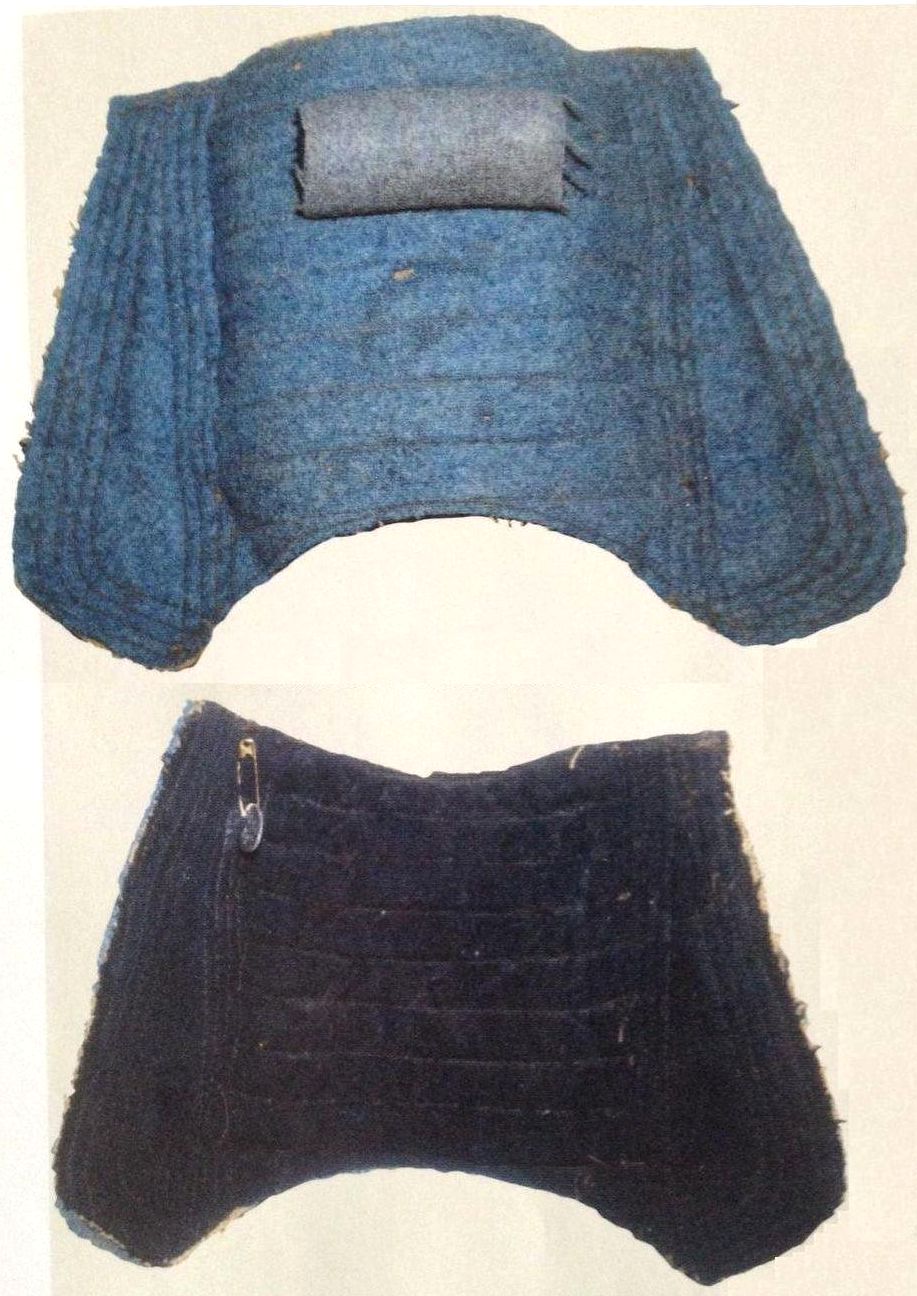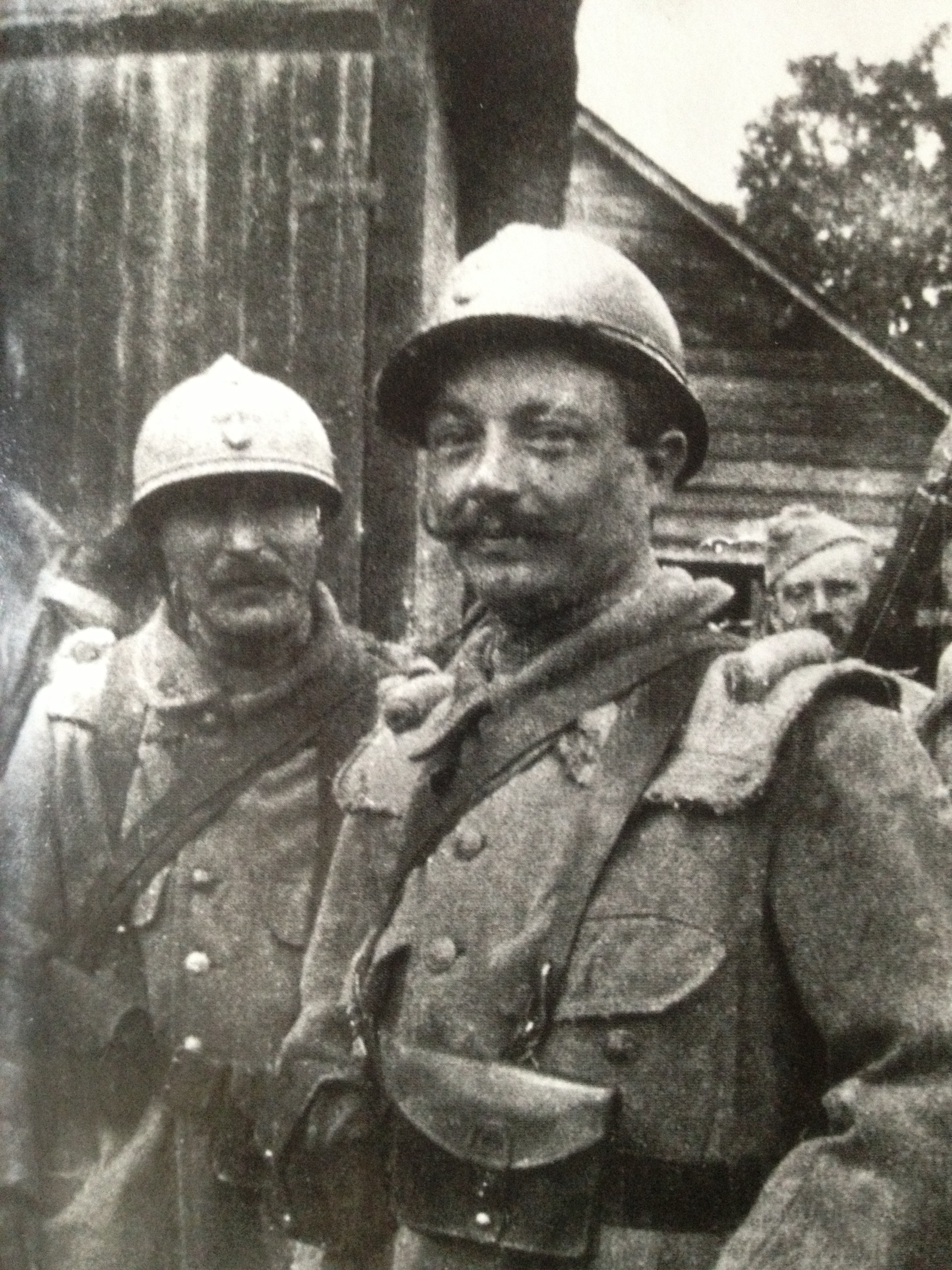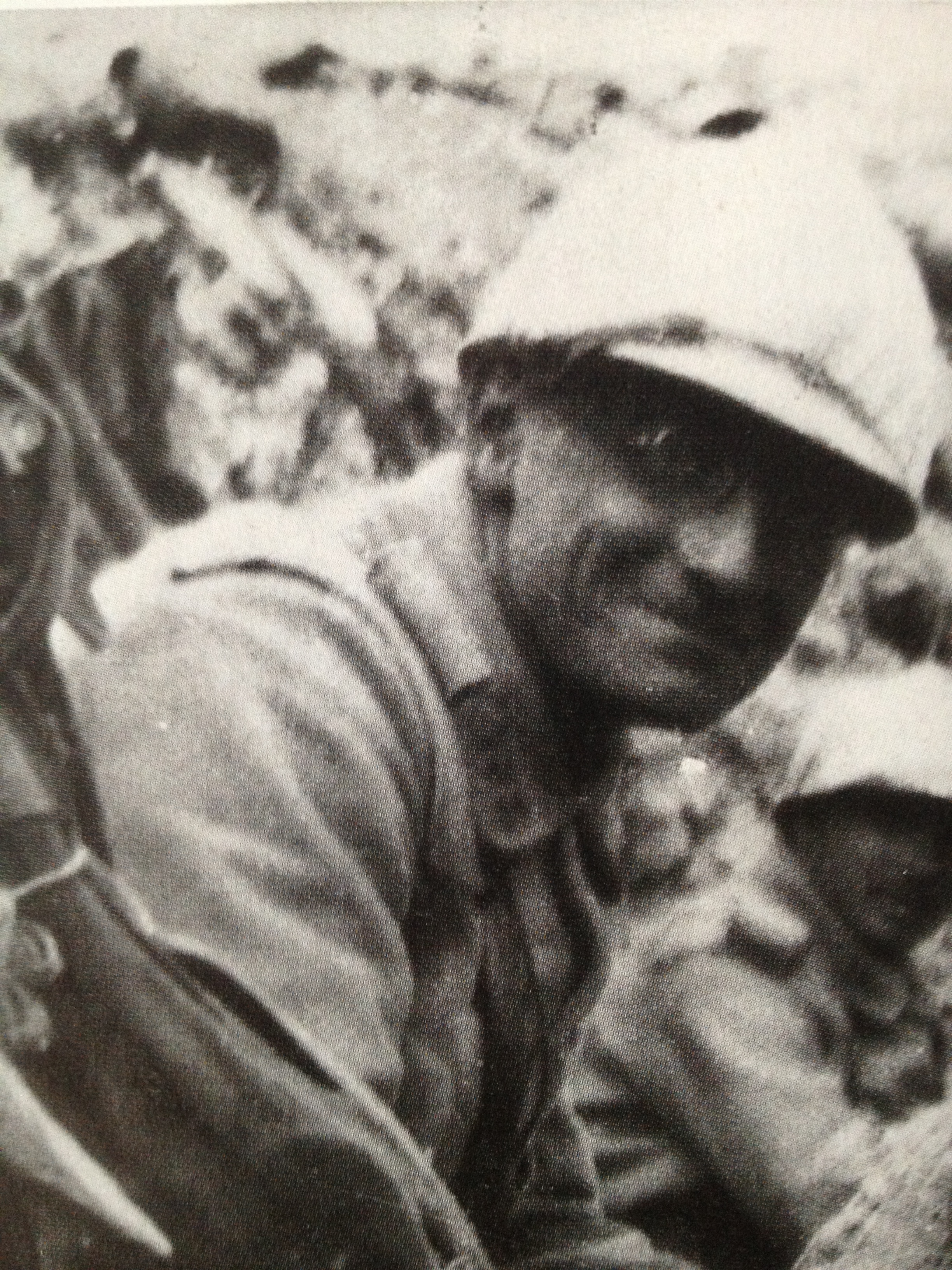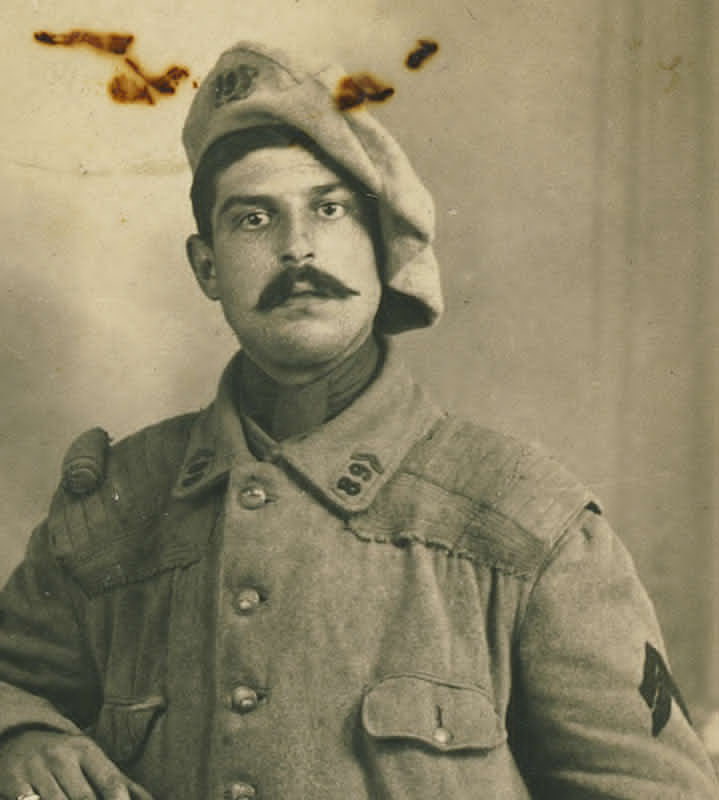Adrian Shoulder Guards
As the French army’s casualties rapidly mounted in the summer and fall of 1914, it became evident that head wounds and shoulder would be a defining injury of the conflict. Most often these had been inflicted by shrapnel, shell fragments or other flying debris. To help reduce the number of head wounds, Quartermaster General Louis Adrian proposed in December 1914 the production of protective headgear, first in the rudimentary form of a steel bowl called a cervelière ("skull-cap") and later by the more refined Adrian helmet. This latter received final approval at the end of April 1915. By September of the same year, all front-line combat units were equipped with the new helmet known simply as the Adrian, done so in conjunction with the opening of the Second Champagne offensive.
General Adrian did not stop there. Always the inventor, his final effort to help reduce injuries from shrapnel and shell-fragments came in the form of shoulder protection. To this end, Adrian designed an , or "shoulder guard" made of uniform wool cloth equipped with metal inserts. He first presented a prototype to Joffre in late September 1915. Beginning in October 1915, 2,000 trial pairs were sent to the army for testing, with the shoulder guards being officially adopted in November 1915. Full scale distribution however would not begin until February 1916.
Each guard consisted of three layers of wool cloth with one internal layer of canvas, which rested just under the top layer of wool. For the wool, light blue and horizon blue wool were used in order to match the greatcoat, though recycled iron-blue gray cloth (pre-war uniforms) was also used for the under-layers. Eight steel strips were inserted between the canvas and top layer of cloth, the strips being secured in place with sewn seams. Near the top outside edge of the guard, a cloth shoulder roll was sewn on similar to the one worn with the greatcoat. The prototype guards could be buttoned down to the shoulder of the greatcoat. Production versions were attached by sewing the guards down at various points along the shoulder.

M1915 Adrian Shoulder Guard.
Yet the shoulder guards would not attain the same popularity that the helmet enjoyed. In July 1916, 5th Army GQG issued a report highlighting a number of defects with the guards. The report noted that the guards impeded movement, rendered firing prone difficult, and that they could cause shoulder pain when worn under the weight of the pack. After the initial rapid distribution, GQG ordered the production of the shoulder guards halted on 25 July 1916. Between February and July though, 3.6 million shoulder guards were distributed. They continued to be worn even after the suppression of the metal inserts on 22 August 1916, done in a futile effort to address the defects highlighted. Stocks remained in the depots into the fall of 1916 and continued to be distributed until they were exhausted.
Photographic evidence suggests that the shoulder guards fell out of use by the fall of 1916. Most photographs showing soldiers wearing the guards date from spring or summer of 1916. Ultimately, the guards were proven to be both ineffective and inconvenient, and soldiers might simply have ditched them on their own. The photographic evidence combined with the quarter-master statistics make the Adrian shoulder guards an ephemeral look of the French soldier in the second semester of 1916.









